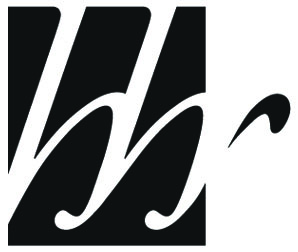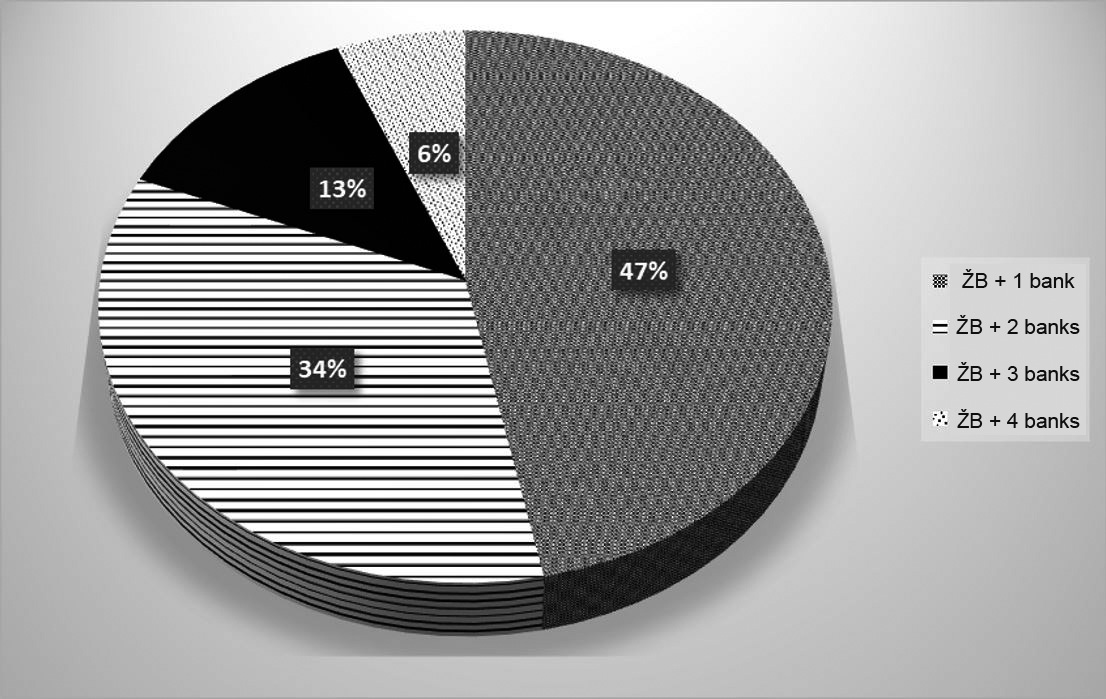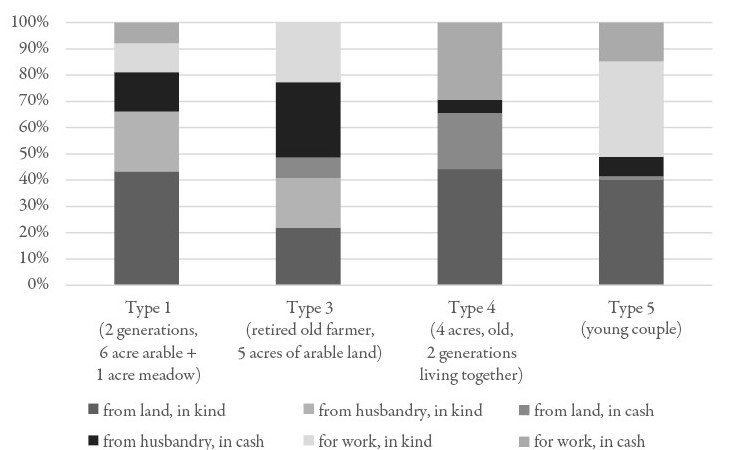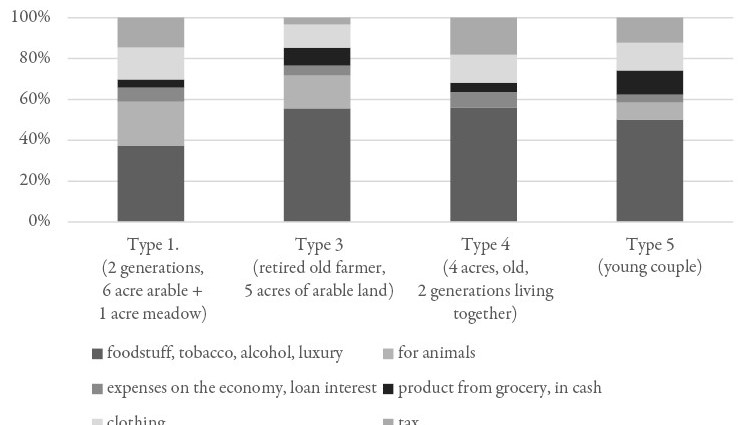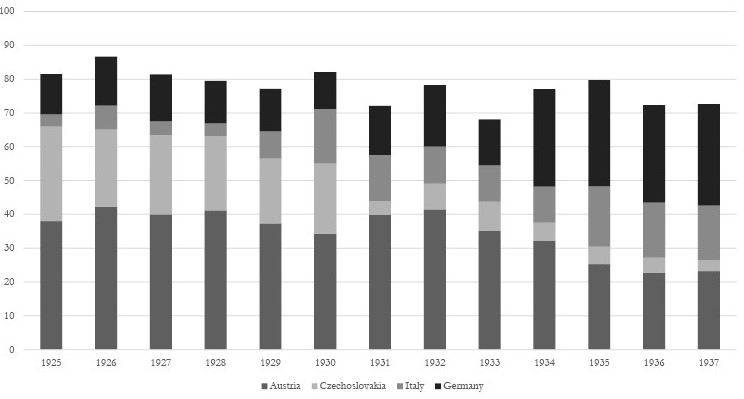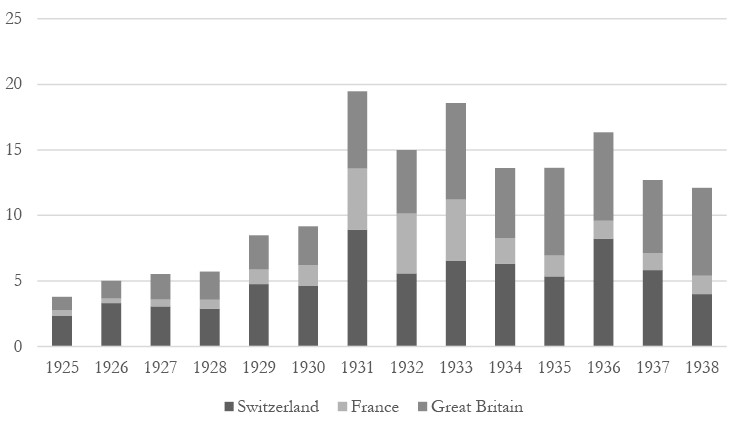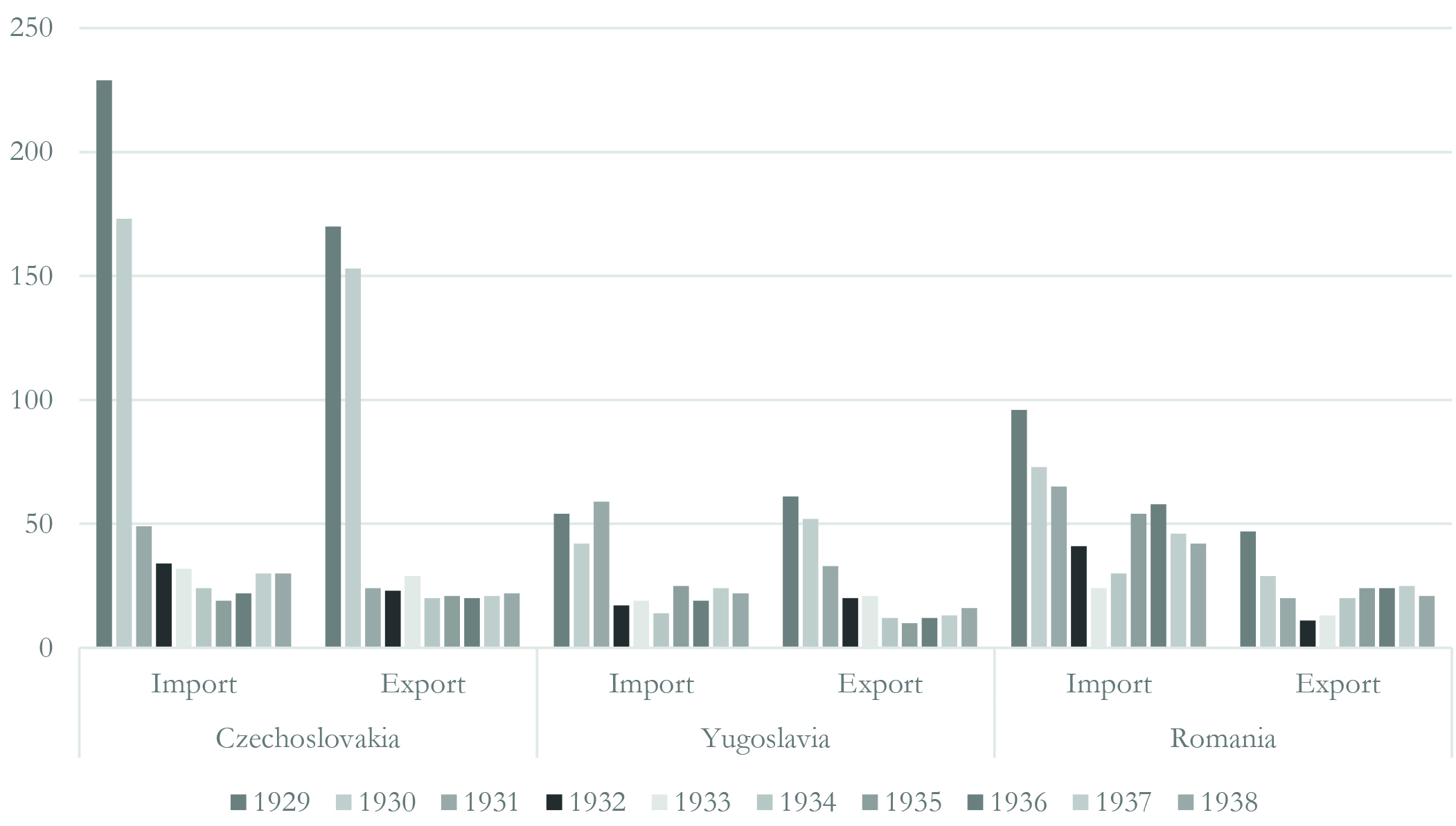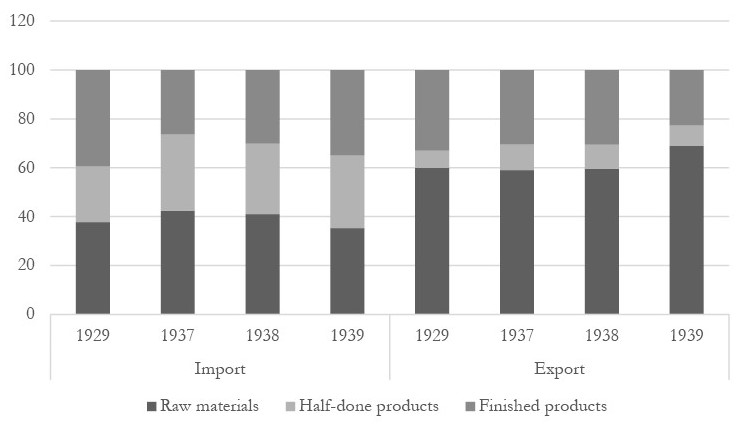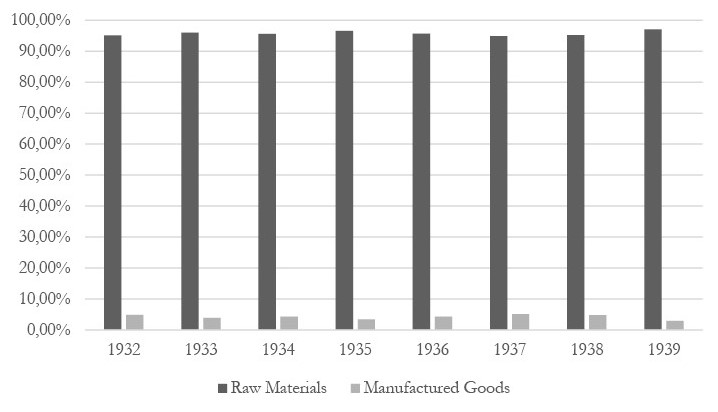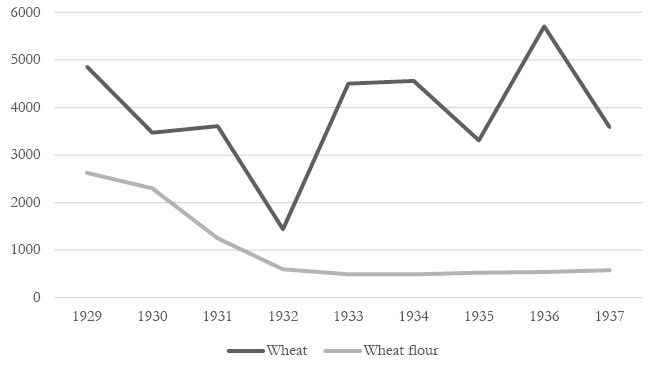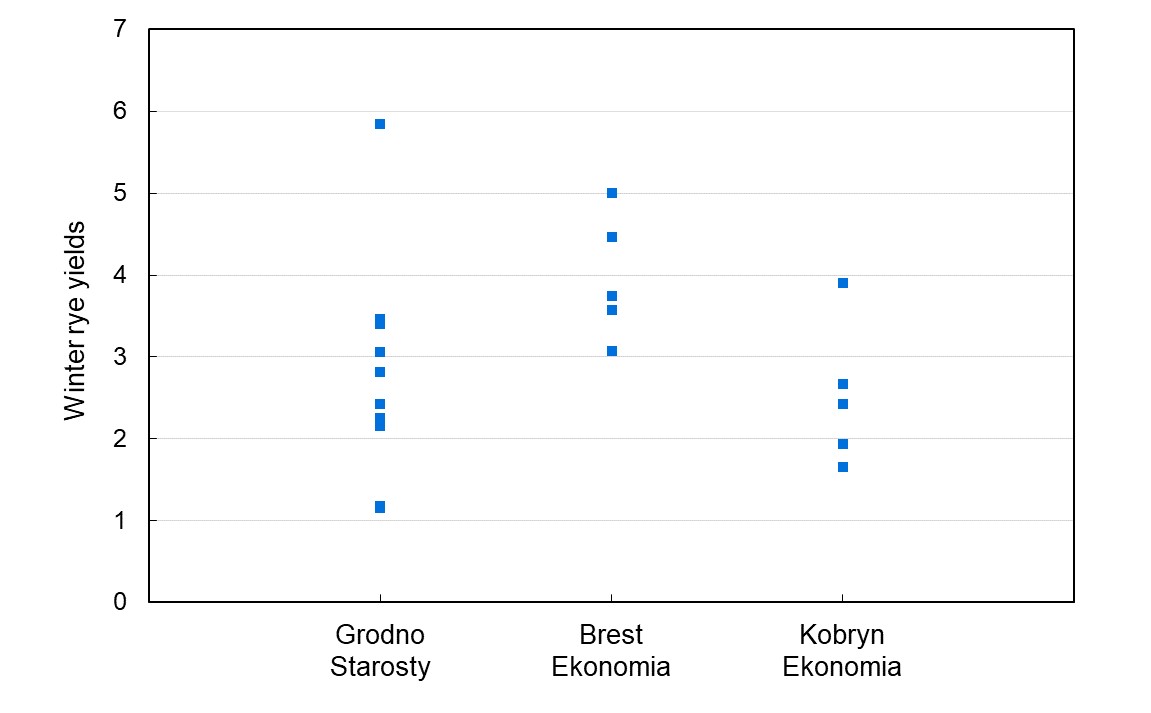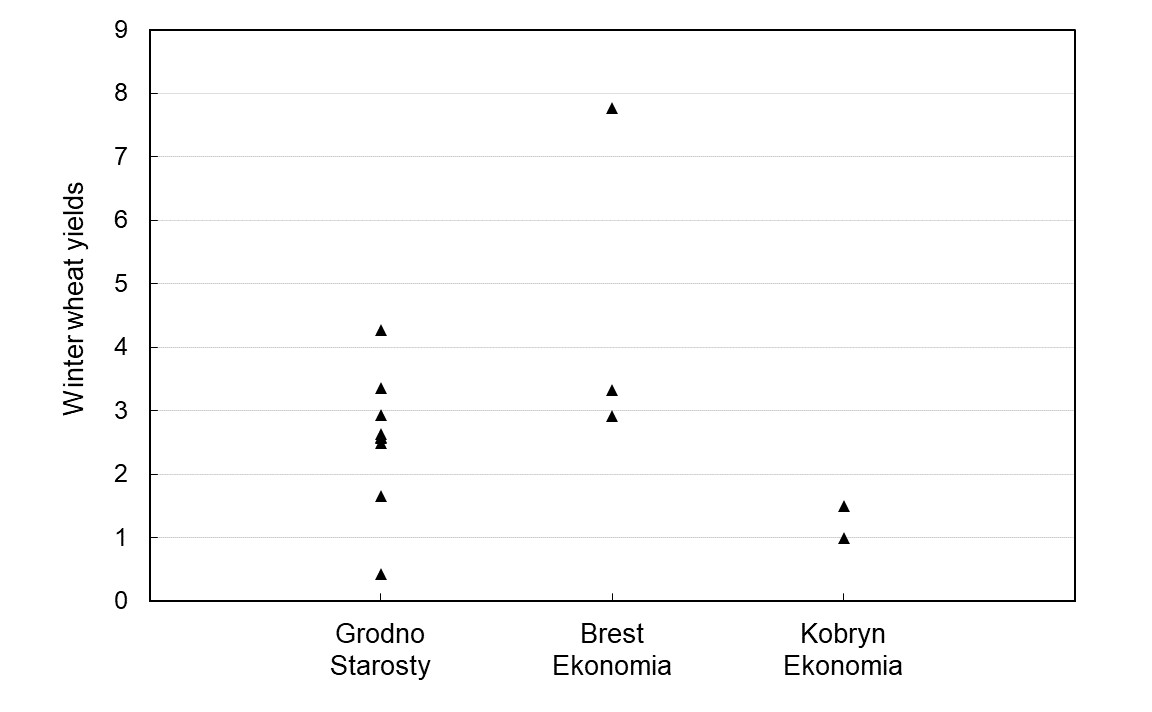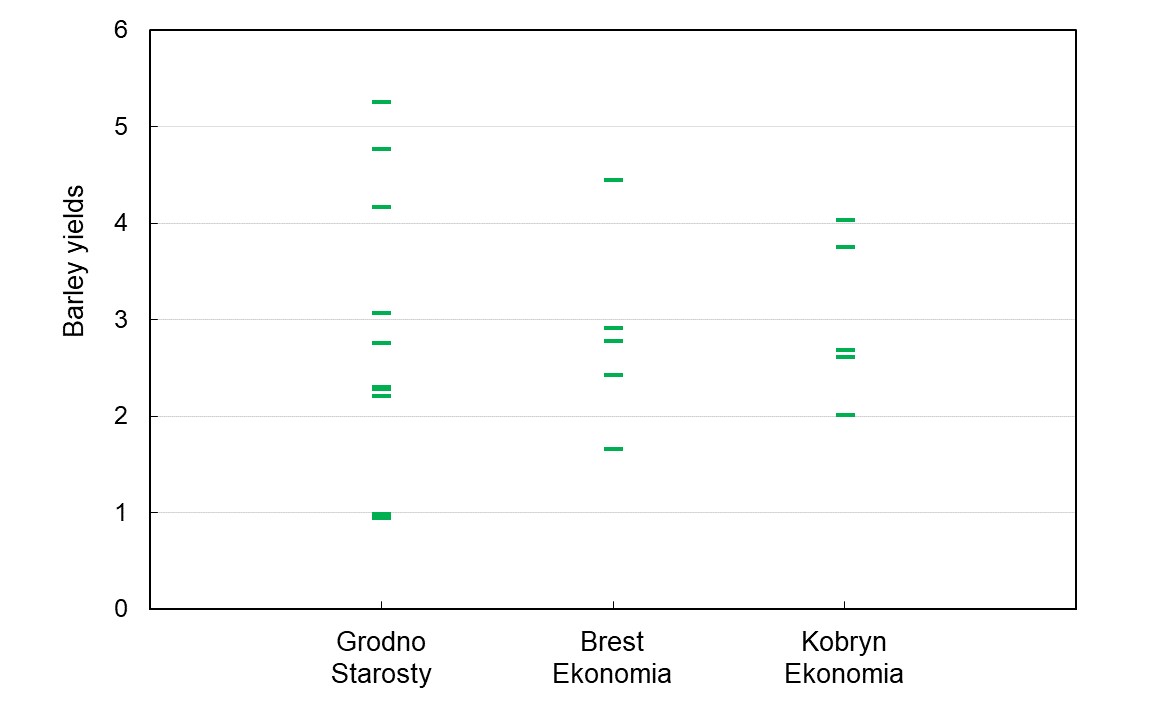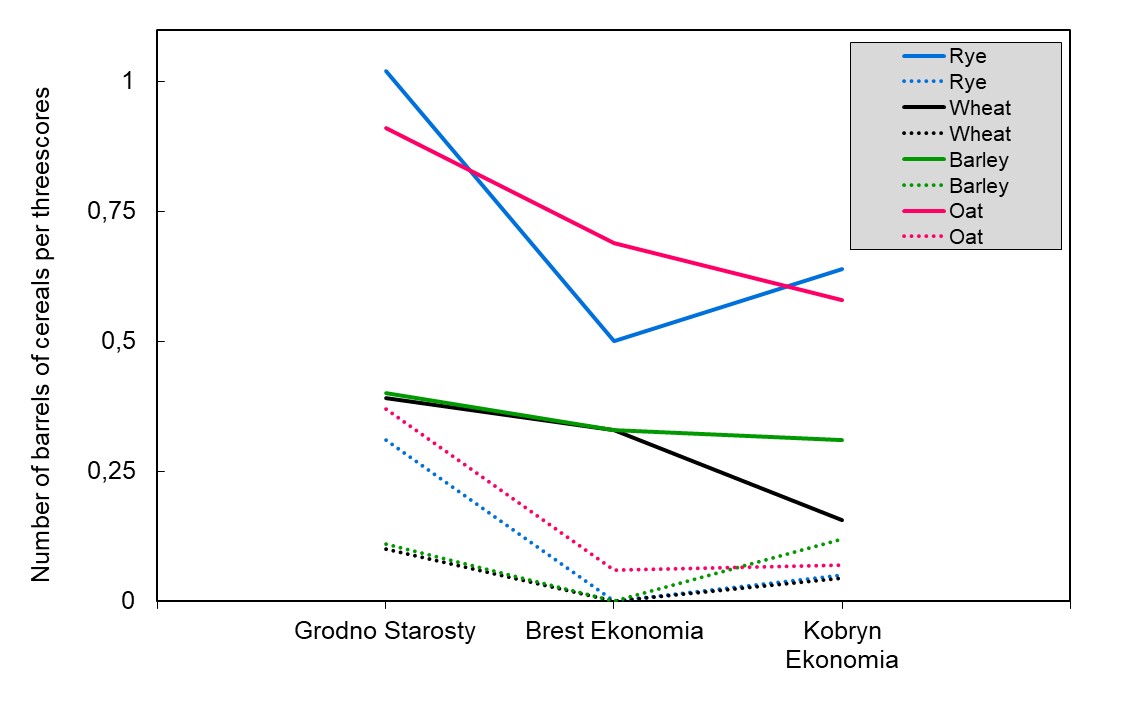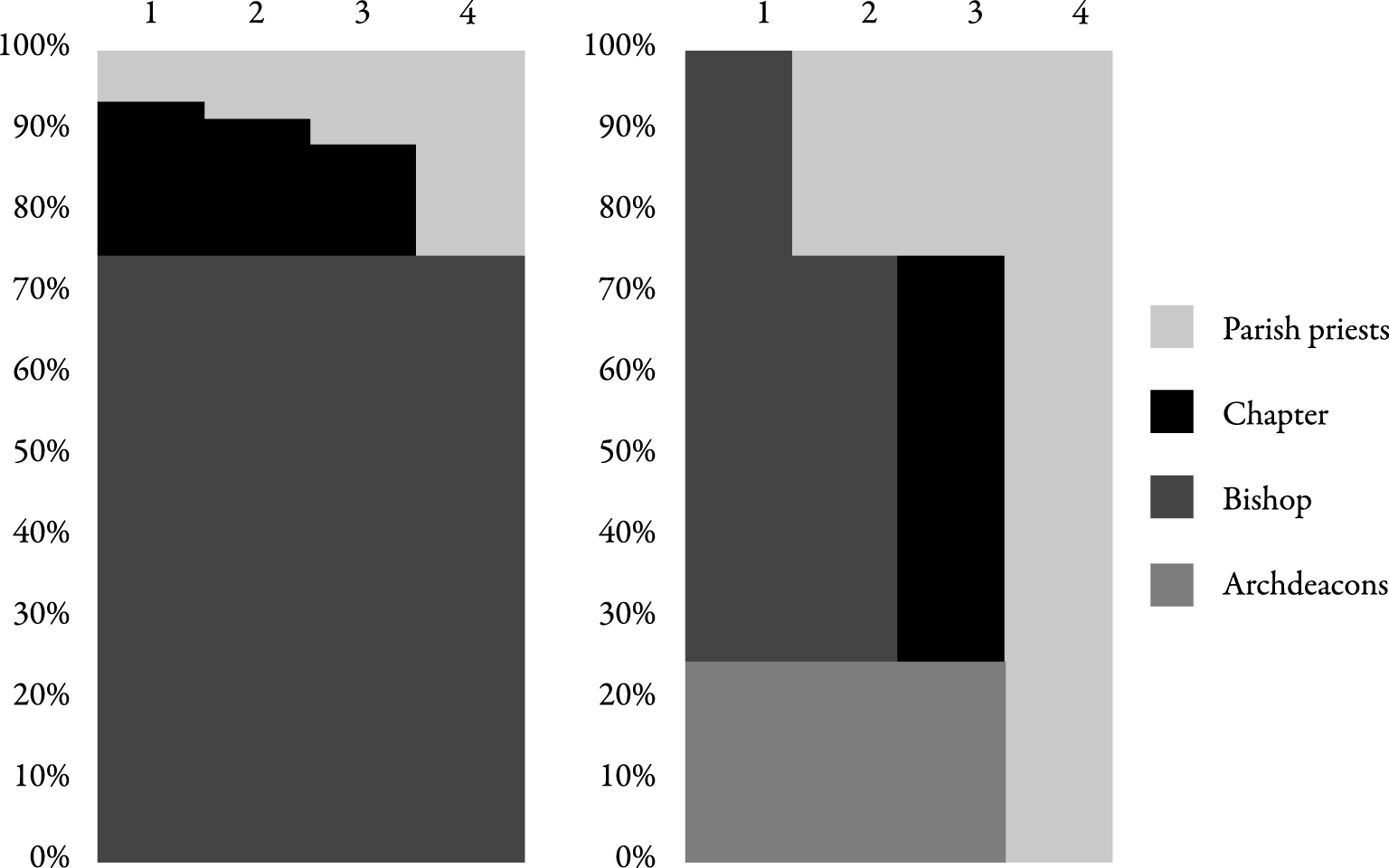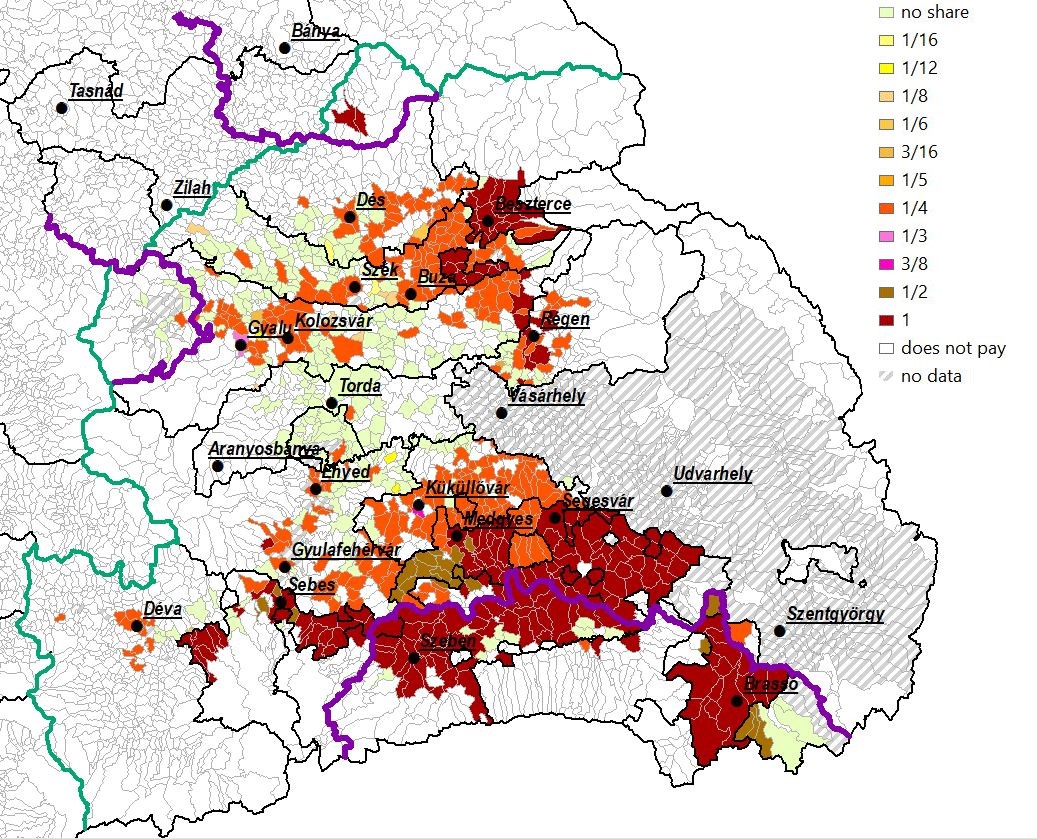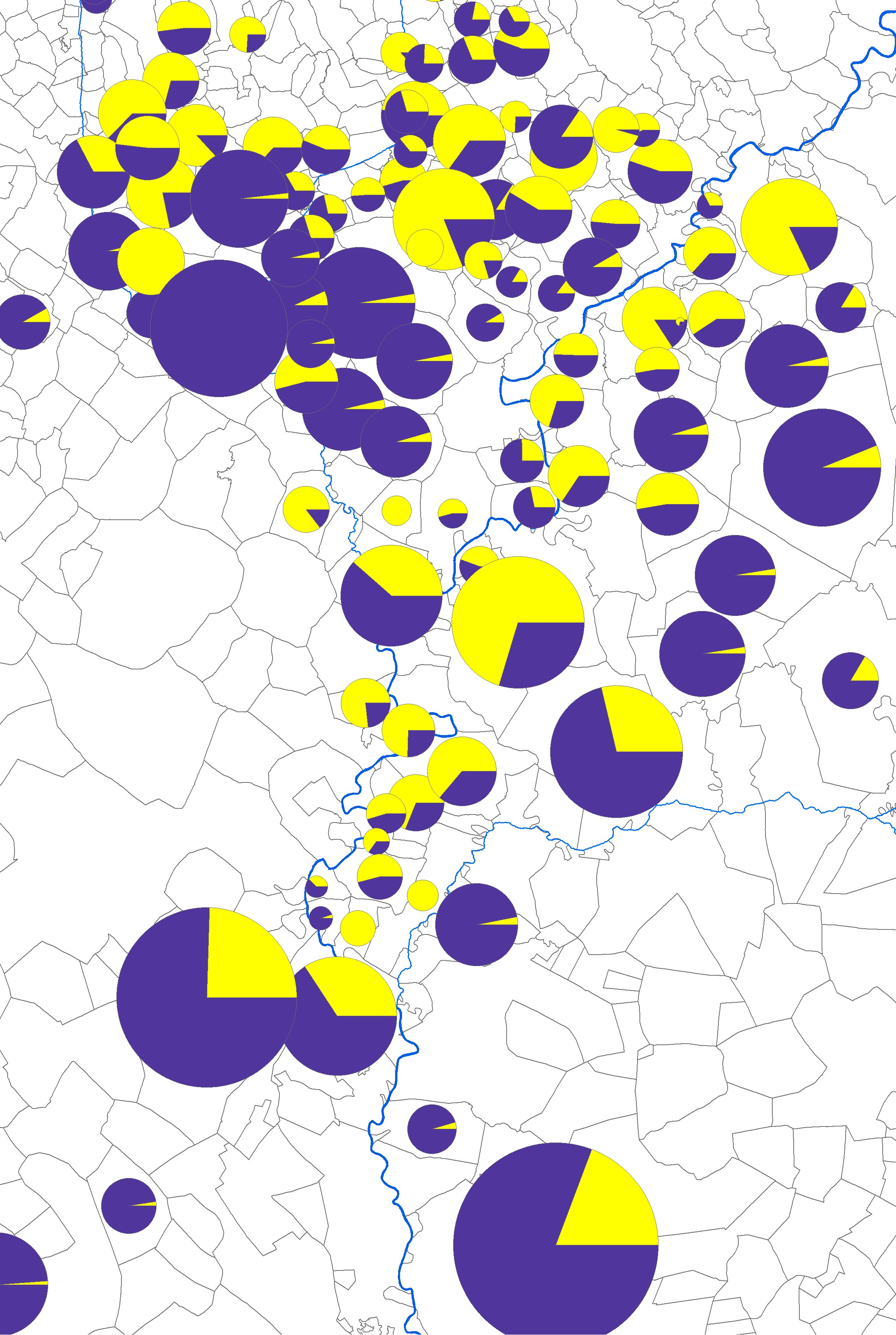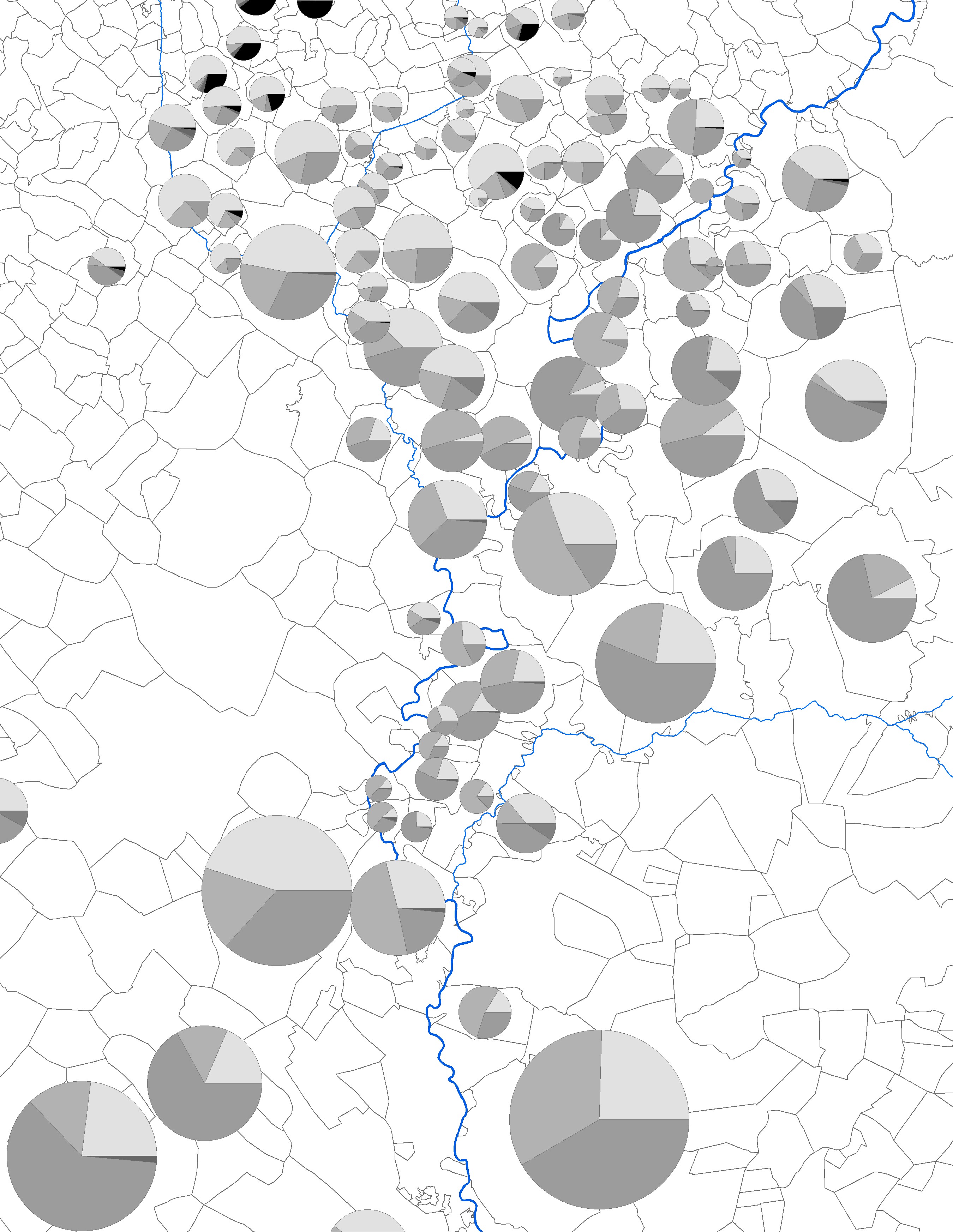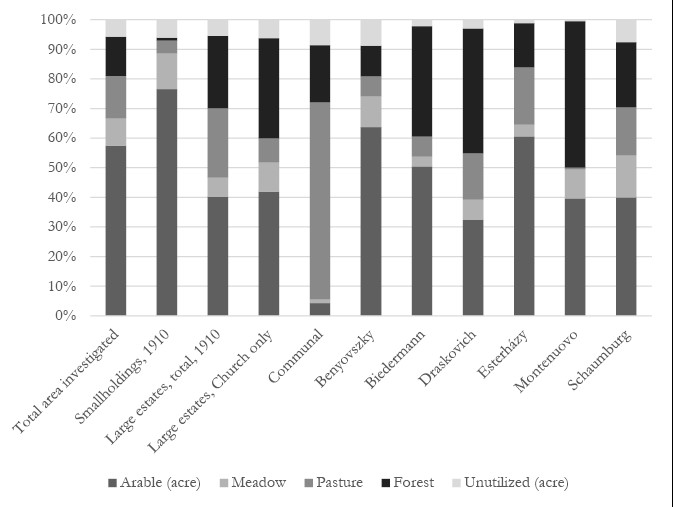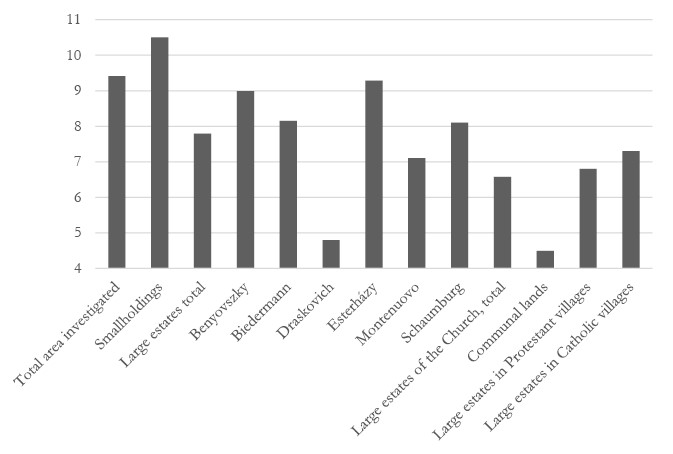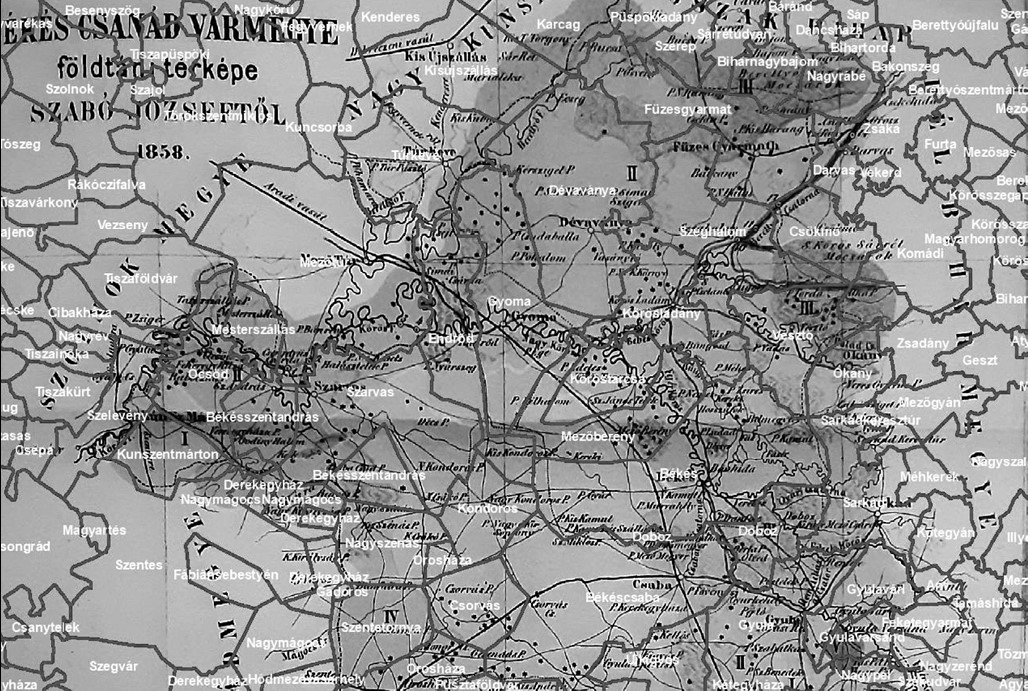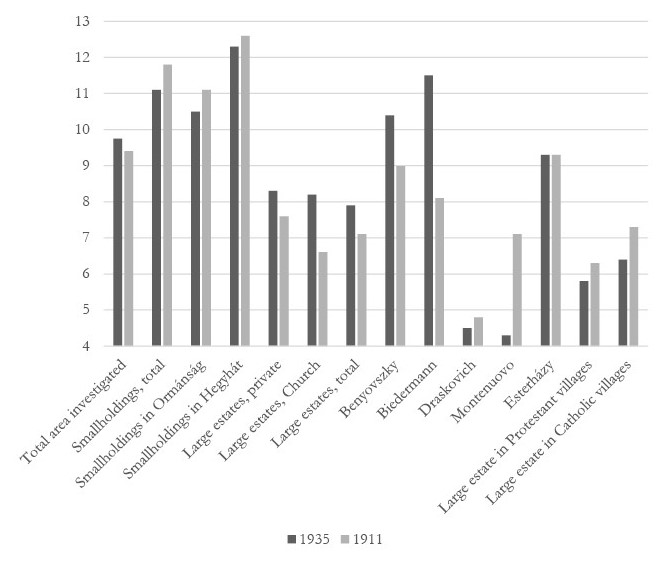2024_4_Smiljanic
The Politics of Business: (Failed) Economic Initiatives of
Slovene Liberals in the First Decades of the Twentieth Century
Ivan Smiljanić
Institute of Contemporary History, Ljubljana
This email address is being protected from spambots. You need JavaScript enabled to view it.
Hungarian Historical Review Volume 13 Issue 4 (2024): 559-574 DOI 10.38145/2024.4.559
Slovenian politics in the late nineteenth and early twentieth century was strongly divided along ideological lines, with the conservative and liberal camps in particular engaging in never-ending cultural struggles through their various outlets. This was also evident in the economic sphere, where the conservative camp held a strong position with a network of cooperatives across the predominantly agricultural areas of Slovenia. The liberal camp tried to gain greater influence and also founded a number of cooperatives in order to exert greater economic and thus also political influence. For reasons such as rashness, inexperience, negligence, and outright corruption, these projects were mostly unsuccessful and ended in a series of bankruptcies or financial scandals.
Keywords: economic nationalism, Slovenia, liberals, Kulturkampf, bankruptcy.
The economy is often understood as an area that moves, changes, fluctuates, and morphs according to its own internal laws, which can only be understood rationally to a certain extent and over which other areas have only a marginal influence. However, there are unquestionably some external forces that can be of great importance to the state of the economy, politics being one of the most important. Political decisions can have a short-term or long-term impact on the state of the economy. One of the most important factors that can arise from this direction is the concept of economic nationalism, which aims to protect the interests of a particular national group as opposed to other groups, which are usually seen as competitors if not outright enemies.1 This approach may run counter to some basic axioms of economics, but it was and still is a strong doctrine in many regions. A similar situation, which can perhaps be considered a subset of economic nationalism (although its name and status are not yet clearly defined in the relevant literature), is the case of economic competition within the same nationality when political and ideological differences exist.
While the Slovenian territory, which belonged to Austria-Hungary until 1918 and was then largely part of the Kingdom of Serbs, Croats and Slovenes, was characterised by strong nationalist Slovenian-German struggles until the collapse of Austria-Hungary, divisions also emerged within the Slovenian group, and these divisions became increasingly pronounced over time. In the second half of the nineteenth century, there was a political and ideological stratification among Slovenian politicians. Although attempts had been made in previous years to stand shoulder to shoulder and face the common enemy (German liberalism) together, the differences proved too great. In 1892, a Catholic party was officially founded with the name Catholic National Party, which has been known as the Slovenian People’s Party since 1905. The Liberals also founded their own party in 1894, the National Progressive Party, followed by a socialist party (the Yugoslav Social Democratic Party) in 1896. The newly founded parties proved divided. They sharply criticised the views and actions of each other. As in other parts of Austria-Hungary and in many other European countries, a veritable Kulturkampf ensued, in which not only the political representatives but also the general public were divided into political camps. The most important Slovenian newspapers, each closely associated with one of the parties, published foul-mouthed articles about their political opponents, harsh condemnations of the opinions and actions of others, and sharply satirical, if not insulting, texts. It was not uncommon for public debates, whether in the newspapers, in the general public or in the Carniolan regional assembly, to become extremely offensive on a personal level. This political reckoning in extremis was an important feature of the (not only) Slovenian political landscape of the fin de siècle.
The party leaders realised that political influence could be strengthened by a strong position in the economy, and every party did its best to establish its dominance in the economic field. They had to take into account the strongly agrarian character of the Slovenian economy. The vast majority of Slovenians, up to 90 percent, belonged to the peasantry. The small percentage of the local economy that did not fall under the agricultural umbrella was mainly based on small family businesses and craft enterprises. Therefore, any group that wanted to increase its political power had to appeal primarily to the peasantry. An important part of the Slovenian peasant economy was the cooperative system, in which peasants, craftsmen, and workers contributed their savings to local cooperatives, which helped them with cheap loans, the purchase of tools and crops, and so on. At the beginning of the twentieth century, the cooperative network spread throughout Slovenia, but it was mainly under the influence of the Catholic conservative party, despite its earliest beginnings being overseen by liberal politicians.2 The liberal party, unable to come to terms with the strong influence of the Catholic Church in the rural parts of Slovenia, tried to establish its own parallel economic institutions in order to increase its own influence, even though its ideology was certainly closer to a (comparatively small) group of the Slovenian bourgeoisie.3 Therefore, in many towns it was not uncommon for there to be two Slovenian cooperatives with different political orientations. The Liberals founded the Association of Slovenian Cooperatives (Zveza slovenskih zadrug), which in a short time included around 130 new member cooperatives. Most of these cooperatives were newly founded, but about a third were taken over from the existing conservative cooperatives. The projects with which the Liberals wanted to achieve increased influence were ambitious, but in their quest for quick success and due to management errors, they often collapsed on themselves.
The Old Liberals’ First Attempt: The Glavna Loan Company
There were two factions within the Liberal Party, the more conservative Old Liberals and the more radical Young Liberals. The two groups differed both in their political-ideological and economic views. At the beginning of the twentieth century, both tried to prove their competence in the economic field by founding two large cooperatives, both of which came to an unfortunate end.
The Old Liberals were the first to try their luck. They founded the Glavna loan company (Glavna posojilnica) in Ljubljana in 1899, although they were generally opposed to the establishment of cooperatives,4 which Glavna officially was. Glavna was intended to be a serious competitor to the Catholic cooperatives, as its name indicates (“Glavna” means “the main one”), but throughout its existence it exerted only a limited influence.5 The institution was plagued by financial problems early on, as several of its main debtors failed and were unable to repay their debts. The director of Glavna, the lawyer Matija Hudnik, got involved in speculative transactions to earn the money he needed and then, in desperation, made an agreement with the auditor of the Cooperative Association in Celje. The auditor touted the strength of the Glavna loan company to the members of the association so that the cooperatives would invest more money in the company, and the auditor then received a commission from this money.6 The scam could not and did not last long.
As soon as the financial problems became known to the public, German agitators allegedly appeared and called on investors to withdraw their money from the collapsing Slovenian savings banks and deposit it in the Carniolan savings bank,7 an old, respected institution that was publicly associated with the German camp. The Catholic camp also allegedly spread disturbing rumors about the state of the Glavna. The liberal press was initially calm and said that there was no need to panic, but the tides soon changed and even the liberal press began to warn that everyone, whether liberal, Catholic, or German, had savings accounts and thus shares in the loan fund and should therefore contribute to its reorganization.8 But it was too late. Glavna had losses of several million crowns (later sources speak of 3.6 million crowns),9 and in February 1911, it went bankrupt.
The news landed on the front pages of Slovenian newspapers10 and caused public outcry. The bankruptcy was a catastrophe for around 500 investors who, mostly without realizing the true significance and extent of their commitment, had pledged the credit company all their assets in case disaster struck. There were hundreds of other investors who had wisely avoided this type of guarantee. “The common good demands that an institution that relies on an unlimited commitment fulfils every penny of its obligations,” the Catholic press insisted.11 The liberal press, on the other hand, was more cautious:
According to the strict wording of the law on cooperatives with unlimited commitments, they would have to cover the entire loss of the institution, which was borne by the members of the cooperative, the vast majority of whom did nothing other than borrow small amounts from this cooperative at a clearly usurious interest rate at the time and, if necessary, return them soon.12
The collapse of the credit society frightened savers in Carniola and Styria and led to a decline in lending in both regions. The Catholic newspaper Slovenec gave the following warning:
The collapse of the Glavna loan company in Ljubljana has affected many loan offices in southern Styria; the Cooperative Association in Celje is writhing in agony; private individuals who are investors in Glavna are cursing this institution and its leaders.13
Many cooperatives and credit companies had to publish reassuring announcements in the newspapers that they were not doing business with Glavna and that they would not lose a penny as a result of its collapse. The possible reorganization of the credit institution was discussed at the regional summit chaired by regional governor Fran Šuklje,14 and the delegation of the loan company was also to meet with the Austrian prime minister and finance minister in Vienna.15
In a heated exchange that lasted for weeks, the liberal and conservative political camps accused each other of being responsible for the bankruptcy of the loan company. The Catholic press reported extensively on the disaster and blamed the incompetent and deceitful leadership of the Liberals. It emphasized that the event, which was caused specifically by the Liberal leadership of the loan company, was extremely unpleasant for the Liberals, as it clearly proved their corruption and incompetence, which they are trying to hide as much as possible in anticipation of the upcoming elections. According to Slovenec, this did not mean that the Conservatives were happy about the disaster, as hundreds of innocent investors had lost their money.16 However, they vehemently rejected any claim that Glavna was in any way connected to the conservative camp. The liberal press, on the other hand, was convinced that the declaration of bankruptcy had been a quick procedure due to the involvement of the Catholic camp,17 which had sought to blame it on the Liberals. The Liberals repeatedly warned that the merchant Tomaž Pavšlar, whose large unpaid debts were fatal to the collapse of the loan company, was also a conservative, and information began to spread that Matija Hudnik was also secretly a conservative sympathizer who had been expelled from the liberal party.18 The Old Liberals defended themselves by claiming that Glavna had been sunk by conservative debtors who had not repaid their debts on time. The discussions were interrupted, albeit rather late, by the liquidation committee, which claimed that it was not “one political party or another” that had been responsible for the disaster, but the board of directors and the supervisors, who had been “reckless and unscrupulous” in their handling of the cooperative’s assets.19
The entire press agreed, however, that the bankruptcy was “one of the saddest facts in the history of our country’s economic independence.”20 There was also clear consensus that it would have serious consequences:
On the Slovenian money market, this bankruptcy is one of the worst blows that has directly affected our trade, our crafts, our private companies and even reaches deep into the conditions of private life. […] It is true that the catastrophe of the Glavna loan company has also caused much hardship and misery in private life and many economic disasters on Slovenian soil.21
The former director Hudnik and the auditor with whom he had committed fraud were arrested and sentenced to several years’ imprisonment at the court hearing in June 1911.22 The bankruptcy proceedings dragged on for several years until a reorganization cooperative was founded in 1914 to help the investors settle their debts.23 The proceedings were halted by World War I, as the bankruptcy trustee was drafted into the army. The proceedings were not officially concluded until 1926,24 so they lasted 15 years and are one of the longest documented Slovenian bankruptcy proceedings. The debtors received 52 percent of the amounts they had claimed.25
The Attempt by the Young Liberals: Agro-Merkur Cooperative in Ljubljana
Thus, the attempt by the Old Liberals to found their own cooperative ended ingloriously. The Young Liberals, who also wished to take over the influence in the Slovenian cooperative system from the Catholics, tried their luck at practically the same time. In autumn 1908, the Agro-Merkur cooperative was opened in Ljubljana, which traded in agricultural products26 and was to become the central trading office of the Association of Slovenian Cooperatives.27 Just over a year after it was founded, Agro-Merkur ran into difficulties. Dr. Gregor Žerjav, its unofficial manager and also a prominent figure of the Liberal group, had no experience running a business,28 and many machinations took place in the cooperative under his management. Agro-Merkur’s debts were far in excess of the officially authorized 50,000 crowns, and Žerjav tried to hide this fact. He did not convene any board meetings and merely noted in Agro-Merkur’s accounts that the debt had been repaid by other loan companies.29 The final sum of Agro-Merkur’s debts, most of which had been accumulated at the Association of Slovenian Cooperatives, exceeded half a million crowns.30 By October 1910, Žerjav’s inexperience and dishonesty had driven Agro-Merkur into bankruptcy.
The reaction of the press was once again stormy. Reporters agreed that Žerjav had wanted to turn the cooperative into an economic giant or that he had wanted “immediately to pin the cooperative to the sky.”31 There was also controversy in the exchange of blows between the young-liberal daily Jutro and the old-liberal Slovenski narod. The Old Liberals were annoyed by the serious consequences of the cooperative experiment and tried to distance themselves from Agro-Merkur by claiming that it had been Žerjav’s private company. Jutro defended Žerjav and blamed Žerjav’s Old Liberal colleagues, who allegedly had had a bad influence on him.32 Either way, in the following months the term “Agro-Merkur” was used in the Slovenian press as a synonym for the economic failure and greed of the (Young) Liberals. Žerjav had to retreat from Ljubljana to Gorizia for a while because of his tarnished public reputation. The press offered the more dramatic report that he had fled to Egypt.33 The conservative newspaper Slovenec commented, “Agro-Merkur is a huge cautionary tale, bitter but extremely instructive.”34
Similarly to the Glavna loan company, the cooperatives in Agro-Merkur were divided into members and other investors. Here too, the members who guaranteed the company with all their assets were threatened. It was alleged in the Catholic press that even when the cooperative was aware of its impending bankruptcy, it forced new members to join by selling them produce or wine so that they could cover their losses.35
There were many other lawsuits in which Agro-Merkur usually lost against the plaintiffs. Slovenski narod tried to relativize the defeats:
Busts are a natural consequence of bankruptcies. What is now being done in Ljubljana is now also being done in Klagenfurt. As is well known, the priests’ cooperative there went bankrupt, and the result was a legal dispute. But there is a big difference. ‘Glavna’ and ‘Agro Merkur’ went bankrupt due to unfortunate speculation. Mishaps in speculation can happen to anyone. Right now, there is talk of a large loss of the church ‘Volksanleihe’ in Styria, which was caused by unfortunate speculation. So ‘Glavna’ and ‘Agro-Merkur’ were destined for disaster because of unfortunate speculation, and the clerical cooperative in Klagenfurt suffered because the Catholic prelates stole millions.36
The criminal investigations following the Agro-Merkur bankruptcy proceedings attracted a great deal of public interest. Those responsible were sentenced to several months in prison, including Žerjav, who was not sent to prison due to his poor health and the outbreak of World War I. The court issued the following statement:
The reasons for the bankruptcy of Agro-Merkur lie primarily in the fact that the loans from the Slovenian Cooperative Association were used in an illegal and irregular manner. The management was not up to the tasks assigned to it, and it deployed staff who were not up to their tasks either. The events that were labelled an accident are of minor
importance, as this accident was related to the overstepping of the client’s scope of work. They were aware of the passivity even before they announced the bankruptcy.37
The bankruptcy proceedings were interrupted by World War I and only continued after 1918. In the new Yugoslav country, where he was also a minister, Žerjav had to deal with old accusations of embezzlement and prison sentences, which were brought up in anti-liberal newspapers. Jutro responded to the accusations with a reinterpretation of past events, namely that Žerjav had been sentenced to prison primarily because of his political and economic activities against the Germans.38 Slovenec saw through Jutro’s revisionist tactics and wrote that the liberal newspaper was using a well-known argument, according to which every act of a Slovene convicted in a court under Austria-Hungary should be understood as an act of “national merit,” and the person convicted should be seen as graced with the halo of martyrdom.39 The proceedings were summarily discontinued around 1928 (without being officially recognized by a public final declaration), with creditors receiving just over six percent of their claims.
Banking Experiments in the New State: Jadranska and Slavenska Banks
Despite these setbacks, the Slovenian Liberals remained influential in the economy even after the collapse of Austria-Hungary and the founding of the Kingdom of Serbs, Croats and Slovenes in 1918. While their cooperative experiments largely faded into the background following the dramatic and costly bankruptcies of two of their supposed flagships, they were still active in the economic sector, but they gradually turned more towards their original bourgeois roots, as reflected in their newfound interest in banking. The spread of influence, whether official or unofficial, was also characterized by exploitation. One of the first scandals to rock the young Yugoslav economy was related to the Jadranska bank (Jadranska banka), the director of which was the influential yet controversial banker, industrialist, and liberal Avgust Praprotnik.40 Praprotnik began his banking career at Jadranska bank, where he quickly rose to leading positions and was appointed general director in 1920. Two years later, when Praprotnik had already left the bank, it turned out that during his time as director, he had secretly transferred around three million crowns intended for political propaganda in Carinthia and the founding of the University of Ljubljana to his political friends, in particular Gregor Žerjav.41 Because he had left the bank in time, Praprotnik, who claimed that he was innocent,42 was not held responsible for the affair in front of the court, but he did gain notoriety. In a later public letter to his successor as the head of Jadranska bank, Praprotnik did almost outright admit to having committed fraud:
But what does my opponent accuse me of? Of having transferred large sums from the profits of Jadranska bank to the Yugoslav Democratic Party? Should I be ashamed of this offence? Have I really committed a crime against the country and the homeland by supporting the cultural, social, national economic, and political actions of the YDP? All banks support political and cultural endeavors with their profits.43
The affair was one of the first major economic disappointments in the newly founded kingdom, but it did not prevent Praprotnik from being appointed director of the Maribor escompte bank.
Soon Praprotnik was involved in the next sensational story. In 1918, Slavenska bank (Slavenska banka) was founded in Zagreb. It quickly developed into one of the largest Yugoslav banks.44 It took over the property of other banks, opened branches at home and abroad, and attracted many customers who were lured by the high interest rates.45 The influence of Slovenian businessmen and bankers, especially the Liberals, on Slavenska bank was great, if not decisive, as they owned the majority of shares and capital.46 Praprotnik was appointed vice-president of the bank in 1923. The largest shareholders wanted to control the bank’s work closely and therefore formed special interest groups from 1922, which influenced the bank’s activities from the background. Žerjav was one of the members.47
In 1924, the bank showed the first signs of difficulties. An inconsistent business policy, excessive lending, and extensive debt cancellation led to a deficit. Žerjav left the interest group and sold his stake in the bank for a large sum, while Praprotnik resigned from his position as vice-president.48 Investors became suspicious and withdrew their deposits en masse. In September 1926, the bank had to stop paying out deposits, and in May 1927 it went bankrupt.49 The bank’s collapse caused a great stir. It was one of the biggest financial upheavals in the country’s history, and the investors, 3,210 in total, ultimately only received 22 percent of their claims back after the bankruptcy proceedings,50 even though the liquidation process dragged on until 1947. Due to his another timely exit, Praprotnik did not have to answer for his actions in the bankruptcy proceedings, though he was identified by the majority of the Slovenian press as one of the main culprits in the bankruptcy. Newspapers that were not favorable to the Liberals wrote that the influence of Žerjav’s group on Praprotnik had merely shifted from Jadranska bank to Slavenska. Jutro tried to deny any connection between Žerjav and Slavenska, but this did not help much.51 Praprotnik was never brought to justice for his role in the affair, but in 1942, he was shot dead on a street in Ljubljana by members of the Partisan Security Service.
A Local Crash: The Kajfež Company in Kočevje
The shadow of the collapse of the liberal economic institutions haunted Žerjav until his death in 1929. The Catholic press always pointed out when a member of the liberal party experienced an economic collapse. The biggest scandal occurred in 1928, when a large timber and catering company owned by Anton Kajfež in Kočevje went bankrupt.52 Kajfež established himself as the richest and most influential Slovenian entrepreneur in Kočevje, which was predominantly inhabited by Gottscheers of German descent. From the Austro-Hungarian period onwards, Kajfež systematically promoted the economic development of the Slovenes and tried to limit German influence. He invested his money in the establishment of Slovenian economic and cultural institutions in the region, employed Slovenian workers, and tried to overcome the strong German influence in the region. As he personally, together with his family, had great influence on these institutions, he began to exploit this influence and accumulated considerable debts to the local bank he had helped to found. When the Kajfež company finally went bankrupt in 1928 due to unwise management53 (although the owner tried to hide the true extent of his debts through false accounting54), its considerable influence on the local economy had a noticeably negative impact on the Slovenian economy in the entire region. The Gottscheer community took the initiative again and remained there until the outbreak of World War II.
What About the Catholic Camp?
The focus of this paper has been on the Slovenian liberal camp, and it might seem that their fiercest ideological enemies in the Catholic camp were flawless by comparison. In fact, the Catholic group did not need to try to boost the economy because they already had the advantage when it came to exerting influence in the Slovenian economic sphere, especially in the agricultural sector. The Catholics’ pride and joy, the well-developed network of cooperatives, was based on the logic that the members controlled one another and focused on supporting the peasants rather than making profits. As a result, financial misdeeds and scandals or cooperative failures were a rare sight, but that doesn’t mean they never happened. When they did occur, the liberal camp, for a change, had a field day in the press.
It is worth considering two such cases from the early twentieth century. In Poljane nad Škofjo Loko, the local Catholic elite founded a cooperative called the Associated Peasants’ Society, which at the same time established a local savings bank which gave generous loans. The people who guaranteed the debts of the savings bank were recruited from Poljane and the neighboring valley and mountain villages, and apparently many of them did not know what they were getting into. The unsustainable cooperative model finally collapsed in 1903 and the company went bankrupt, much to the chagrin of the local peasantry.55 The liberal camp, which had insisted for years that the widespread network of Catholic cooperatives was rotten from within and only served to ensure that the exploitative local clergy received money from the peasants, immediately began to write about the incident:
So another church cooperative has died, while the Catholics of Poljane claimed from the beginning that the association was flourishing and spreading the fame of the parish of Poljane for miles! But now this marvelous growth is showing! In the last nine months, these misguided poor people have lost 4,500 crowns!56
Slovenec was more reserved than usual this time and vaguely blamed an undefined, unhealthy state of the cooperative for the financial collapse.57 It seems that despite the liberal press emphasizing the guilt of the Catholic representatives, the official view was similar, because a court case was organized in which seven of the peasants who had (presumably unwittingly) guaranteed the bank’s liquidity were charged, but they were sentenced to very light prison terms because the court decided that they had not understood what they had signed or what they had been offering a pledge to guarantee.58
The second major Catholic affair took place at a similar time and not far from Poljane. This time it was connected with the peasant society in Dolenja Dobrava, a small village near Gorenja vas. This society was founded in 1899 by local landowners, but mainly by those who had no experience in trade or bookkeeping and many of whom were not entirely literate. They succeeded in recruiting a number of members, but there were disruptions in the society’s operations from the outset.59 The first president therefore resigned, and his successor began to support the liberals. It is hard to say what followed, but apparently his conversion was so unwelcome that he was framed for fraud for allegedly having stolen from the cooperative. He was arrested, but the court proceedings revealed that he was most likely not guilty, and he was released. Due to his tarnished reputation, he left Dolenja Dobrava and went to the United States.60 Despite his departure, the unrest in the cooperative did not stop, and it seemed to have fewer and fewer resources. The disheartened and disappointed peasant members of the cooperative demanded the closure of the cooperative and bankruptcy, but the leadership only supported liquidation and was unwilling to recognize the debt. Tensions were high, and although liquidation was initially declared, bankruptcy was finally declared in 1909.61 Slovenski narod printed the following victorious declaration: “So this is the famous clerical economy. One bankruptcy after another!”62 The bankruptcy proceedings lasted until 1913, and the liberal regional newspaper Gorenjec summarized the affair in the following words:
One thing remains clear: the clerics wanted to use the agricultural association in Dolenja Dobrava to build their fortress against the progressives, especially the progressive merchants, but they failed. With their reckless economics, they plunged many people into misfortune.63
Some of the high-profile affairs presented above show that the Slovenian liberal camp was prepared to go to great lengths to secure economic influence, which they saw as a means of gaining support for their political activities and strengthening their position vis-à-vis the Slovenian Conservatives. To achieve this, their leading members often acted boldly, unwisely, or even illegally. The Liberals therefore experienced a series of successes and failures, with the latter often becoming notorious public scandals due to their scale and the number of victims. The situation can be summarized as follows: the Catholic camp operated with smaller institutions and more modest sums of money, and it invested cautiously and in fairly safe investments which did not bring it great wealth but contributed to its firm anchoring among the Slovenes. The liberal camp, on the other hand, tried to catch up with the established Catholic influence in the economy with bold economic projects that promised immediate high profits. In this sense, the liberal project was not successful, as the conservative party always remained the most influential Slovenian party in the interwar period. Economic influence, at least in the rural parts of the country, remained firmly in the hands of the Conservatives up until the political changes during the war and postwar times.
Archival Sources
Arhiv Republike Slovenije [Archives of the Republic of Slovenia], Ljubljana
SI AS 307, Deželno sodišče v Ljubljani [Regional Court in Ljubljana]
S 11/10, Agro-Merkur.
Bibliography
Primary sources
Gorenjec, 1909, 1910.
Jutro, 1910, 1911, 1926.
Kramer, Albert. “Resnica o Agro-Merkurju” [The truth about ‘Agro-Merkur’]. Jutro, March 25, 1925.
Narodne novine, 1927.
Praprotnik, Avgust. “Poslano. Odgovor na poziv” [Sent. Response to invitation]. Jugoslavija, June 7, 1922.
Praprotnik, Avgust. “Zoper klevete” [Against defamation]. Tabor, June 1, 1922.
Slovenec, 1903, 1910, 1911, 1914, 1925, 1927, 1929, 1932.
Slovenski narod, 1902, 1904, 1910, 1911, 1912, 1923.
Secondary literature
Koch, Natalie. “The Political Geography of Economic Nationalism.” In Handbook of Economic Nationalism, edited by Andreas Pickel, 14–28. Cheltenham, Northampton: Edward Elgar Publishing, 2022.
Kofman, Jan. Economic Nationalism and Development: Central and Eastern Europe Between the Two World Wars. Oxford: Westview, 1997.
Lazarević, Žarko. “Economic Concepts of Slovene Liberalism before WW II.” Slovene Studies 31, no. 1 (2009): 21–30.
Lazarević, Žarko. “Economy and Nationalism in Yugoslavia.” In History and Culture of Economic Nationalism in East Central Europe, edited by Helga Schultz, and Eduard Kubů, 265–77. Berlin: Berliner Wissenschafts-Verlag, 2006.
Lazarević, Žarko. “National and Economic Features of Slovene Cooperatives.” In Cooperatives in Ethnic Conflicts: Eastern Europe in the 19th and Early 20th Century, edited by Torsten Lorenz, 251–62. Berlin: Berliner Wissenschafts-Verlag, 2006.
Lazarević, Žarko, and Jože Prinčič. Bančniki v ogledalu časa [Bankers in the mirror of time]. Ljubljana: Združenje bank Slovenije, 2005.
Lazarević, Žarko, and Jože Prinčič. Zgodovina slovenskega bančništva [History of Slovenian banking]. Ljubljana: Združenje bank Slovenije, 2000.
Lazarević, Žarko, Marta Rendla, and Janja Sedlaček. Zgodovina zadružništva v Sloveniji (1856–1992) [History of cooperatives in Slovenia (1856–1992)]. Ljubljana: Zadružna zveza Slovenije, 2023.
Mohorič, Jakob. O zgodovini slovenske krščanske demokracije: spominski zapisi dr. Jakoba Mohoriča (1888–1976) [On the history of Slovenian Christian democracy: memoirs of Dr. Jakob Mohorič (1888–1976)]. Ljubljana: Založba ZRC, ZRC SAZU, 2019.
Perovšek, Jurij. “Afera Jadranska banka” [The Jadranska Bank Affair]. In Slovenska kronika XX. stoletja: 1900–1941 [Slovenian chronicle of the 20th century: 1900–1941], edited by Marjan Drnovšek, and Drago Bajt, 272. Ljubljana: Nova revija, 1995.
Schultz, Helga. “Introduction: the Double-Edged Sword of Economic Nationalism.” In History and Culture of Economic Nationalism in East Central Europe, edited by Helga Schultz, and Eduard Kubů, 9–25. Berlin: Berliner Wissenschafts-Verlag, 2006.
Smiljanić, Ivan. “ ‘Erased from the Face of God’: Slovene Economic Nationalism in Press Reports on A. Kajfež & Co. in Kočevje.” Historical Studies on Central Europe 3, no. 1 (2023): 122–43.
Tršan, Lojz. “Propad Slavenske banke – največji finančni šok med obema vojnama v Sloveniji” [The collapse of Slavenska bank – the biggest financial shock in Slovenia between the two world wars]. Borec: revija za zgodovino, literaturo in antropologijo 46, no. 529–31 (1994): 368–74.
-
1 For more on economic nationalism see e.g. Koch, “The Political Geography”; Schultz, “Introduction”; Kofman, Economic Nationalism. On this topic on the territory of Yugoslavia, see Lazarević, “Economy and Nationalism.”
-
2 Lazarević, “National and Economic Features.” Lazarević et al., Zgodovina zadružništva, 14–42, 66–77.
-
3 For an overview of the economic thought of Slovene liberals see Lazarević, “Economic Concepts.”
-
4 Mohorič, O zgodovini, 113.
-
5 “ ’Glavna posojilnica’.” Slovenec, December 24, 1910.
-
6 “Glavna posojilnica pred poroto (2)” [‘Glavna’ before the jury]. Jutro, June 6, 1911.
-
7 “Agitatorji ‘Kranjske šparkase’” [Agitators of the “Kranjske šparkase”]. Jutro, January 20, 1911.
-
8 “Timeo Danaos et dona ferentes.” Jutro, January 24, 1911.
-
9 “Glavna posojilnica.” Slovenski narod, October 25, 1923.
-
10 “ ‘Glavna posojilnica’ v Ljubljani v konkurzu!“ [‘Glavna’ in Ljubljana in bankruptcy]. Slovenski narod, February 14, 1911.
-
11 “ ’Glavna’ posojilnica.” Slovenec, January 5, 1911.
-
12 “Glavna posojilnica.” Slovenski narod, December 24, 1910.
-
13 “Gosp. Ivan Hribar v brezdelju” [Mr. Ivan Hribar in idleness]. Slovenec, July 12, 1911.
-
14 “O ‘Agro-Merkurju’.” Slovenski narod, June 22, 1911.
-
15 “Deputacija ‘Glavne posojilnice’ na Dunaju” [Deputation of ‘Glavna’ in Vienna]. Slovenec, March 10, 1911.
-
16 “Polom liberalne ‘Glavne posojilnice’” [The collapse of liberal ‘Glavna’]. Slovenec, January 21, 1911.
-
17 “Kako delajo klerikalci za Glavno posojilnico v Zvezdi” [How do clerics work for ‘Glavna’ in Zvezda]. Jutro, February 11, 1911.
-
18 “Klerikalni značaji” [Clerical characters]. Jutro, February 12, 1911.
-
19 Likvidacijski odbor ‘Glavne posojilnice’ [Liquidation Committee of ‘Glavna’], “Poslano” [Sent]. Slovenec, January 30, 1914.
-
20 “ ‘Slovenčeva’ infamija javno obsojena” [“Slovenec’s” infamy publicly condemned]. Jutro, June 8, 1911.
-
21 “Glavna posojilnica pred poroto (1)” [‘Glavna’ before the jury]. Jutro, June 4, 1911.
-
22 “Glavna posojilnica pred poroto (3)” [‘Glavna’ before the jury]. Jutro, June 12, 1911.
-
23 “Iz seje kranjskega deželnega odbora dne 27. junija 1914” [From the session of the Carniolan Provincial Committee on June 27, 1914]. Slovenec, June 30, 1914.
-
24 “Konkurz Glavne posojilnice končan” [Bankruptcy of ‘Glavna’ completed]. Jutro, September 30, 1926.
-
25 “Glavna posojilnica.” Slovenski narod, October 25, 1923.
-
26 “Agro-Mercurjeve manipulacije pred sodiščem (1)” [The manipulations of ‘Agro-Mercur’ before the court]. Slovenec, March 30, 1914.
-
27 Lazarević et al., Zgodovina zadružništva, 111–17.
-
28 Mohorič, O zgodovini, 113.
-
29 Archiv Republike Slovenije SI AS 307, S 11/10, no. 45. Agro-Merkur.
-
30 “Agro-Mercurjeve manipulacije pred sodiščem (2)” [The manipulations of ‘Agro-Mercur’ before the court]. Slovenec, April 6, 1914.
-
31 “Nekaj za mladine” [Something for the youth]. Slovenec, July 14, 1910.
-
32 “Agro-Merkur.” Jutro, November 10, 1910.
-
33 “Agro-Merkur.” Slovenski narod, November 9, 1910.
-
34 “Agro-Mercurjeve manipulacije pred sodiščem (1)” [The manipulations of Agro-Mercur before the court]. Slovenec, March 30, 1914.
-
35 “Iz liberalnega zadružnega delovanja” [From liberal cooperative action]. Slovenec, April 6, 1911.
-
36 “Klerikalna škodoželjnost” [Clerical malice]. Slovenski narod, March 16, 1912.
-
37 “Agro-Mercurjeve manipulacije pred sodiščem (1)” [The manipulations of ‘Agro-Mercur’ before the court]. Slovenec, March 30, 1914.
-
38 Kramer, “Resnica o Agro-Merkurju.”
-
39 “ ‘Agro-Merkur’ – narodno herojstvo” [‘Agro-Merkur’ – national heroism]. Slovenec, March 28, 1925.
-
40 Lazarević and Prinčič, Bančniki, 80–85.
-
41 Perovšek, “Afera Jadranska banka.”
-
42 Praprotnik, “Zoper klevete.”
-
43 Praprotnik, “Poslano. Odgovor na poziv.”
-
44 Tršan, “Propad Slavenske banke,” 368.
-
45 Lazarević and Prinčič, Zgodovina slovenskega bančništva, 49–50.
-
46 Tršan, “Propad Slavenske banke,” 371.
-
47 Ibid., 368–69.
-
48 Ibid., 369–70.
-
49 “Stečaj” [Bankruptcy]. Narodne novine, May 20, 1927.
-
50 “100 Din = 22 Din.” Slovenec, November 29, 1929.
-
51 “SDS – odločilni faktor v ‘Slavenski banki’” [SDS – the decisive factor in ‘Slavenska Bank’]. Slovenec, January 22, 1927.
-
52 For a more detailed overview of this case see Smiljanić, “ ‘Erased from the Face of God’.”
-
53 “Odmevi Kajfeževega konkurza” [Echoes of Kajfež’s bankrupcy]. Slovenec, October 26, 1929.
-
54 “Proces o Kajfeževi imovini” [The assets of Kajfež]. Slovenec, March 15, 1932.
-
55 “Sadovi klerikalne gospodarske organizacije” [The fruits of clerical economic organization]. Slovenski narod, July 27, 1904.
-
56 “Kmetijsko društvo v Poljanah nad Škofjo Loko” [Agricultural Society in Poljane nad Škofjo Loko]. Slovenski narod, September 25, 1902.
-
57 “Zvezno kmetijsko društvo v Poljanah” [Federal Agricultural Society in Poljane]. Slovenec, July 27, 1903.
-
58 “Sadovi klerikalne gospodarske organizacije” [The fruits of clerical economic organization]. Slovenski narod, July 27, 1904.
-
59 “Kmetijsko društvo na Dolenji Dobravi v Poljanski dolini nad Šk. Loko (1)” [Agricultural Society on Dolenja Dobrava in the Poljanska Valley above Šk. Loka]. Slovenski narod, April 22, 1910.
-
60 “Kmetijsko društvo na Dolenji Dobravi v Poljanski dolini nad Šk. Loko (2)” [Agricultural Society on Dolenja Dobrava in the Poljanska Valley above Šk. Loka]. Slovenski narod, April 25, 1910.
-
61 “Kmetijsko društvo na Dolenji Dobravi v Poljanski dolini nad Šk. Loko” (3) [Agricultural Society on Dolenja Dobrava in the Poljanska Valley above Šk. Loka]. Slovenski narod, April 26, 1910.
-
62 “Škandalov še ni konec” [The scandals are not over yet]. Gorenjec, June 26, 1909.
-
63 “Iz Poljanske doline” [From the Poljanska Valley]. Gorenjec, February 19, 1910.
